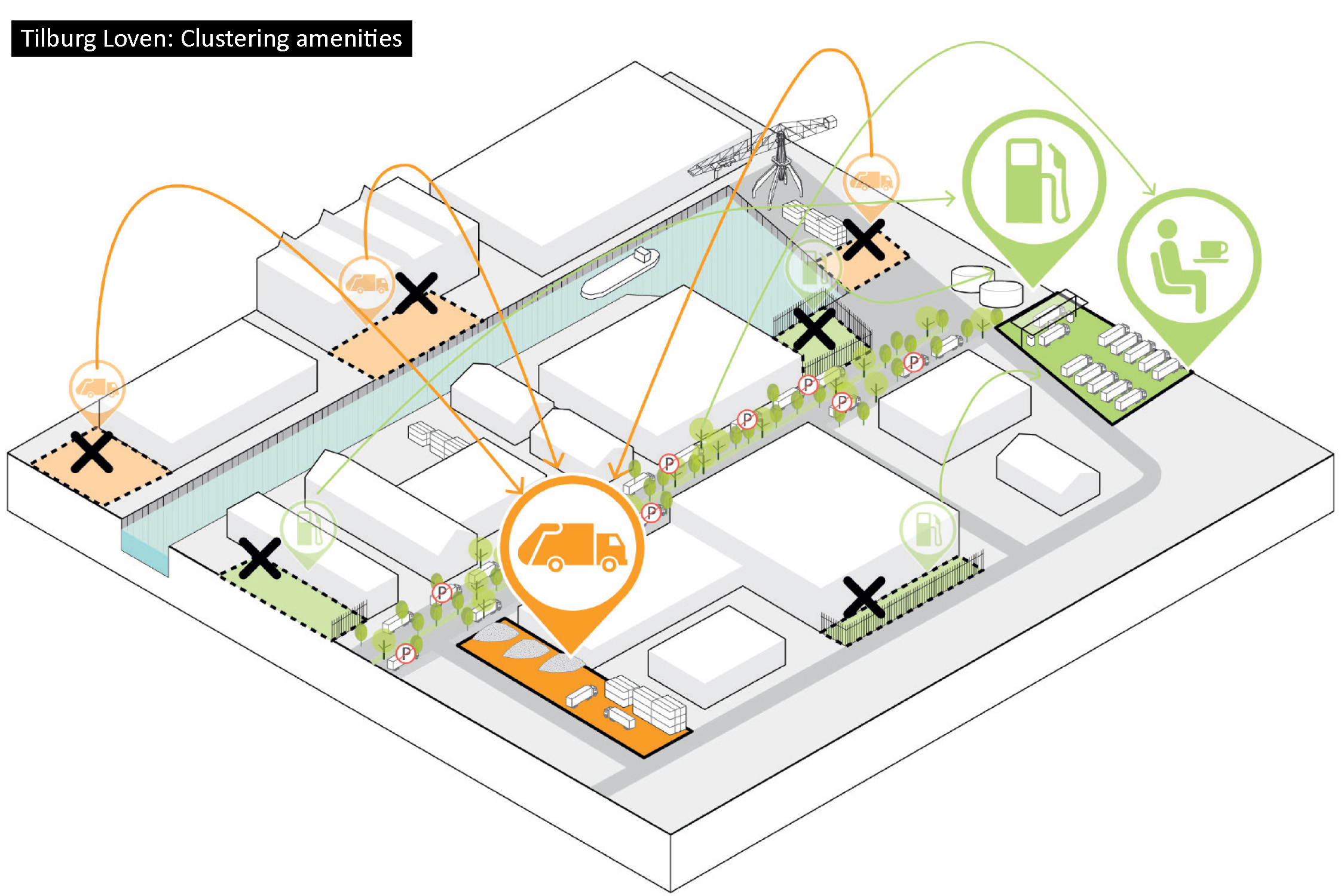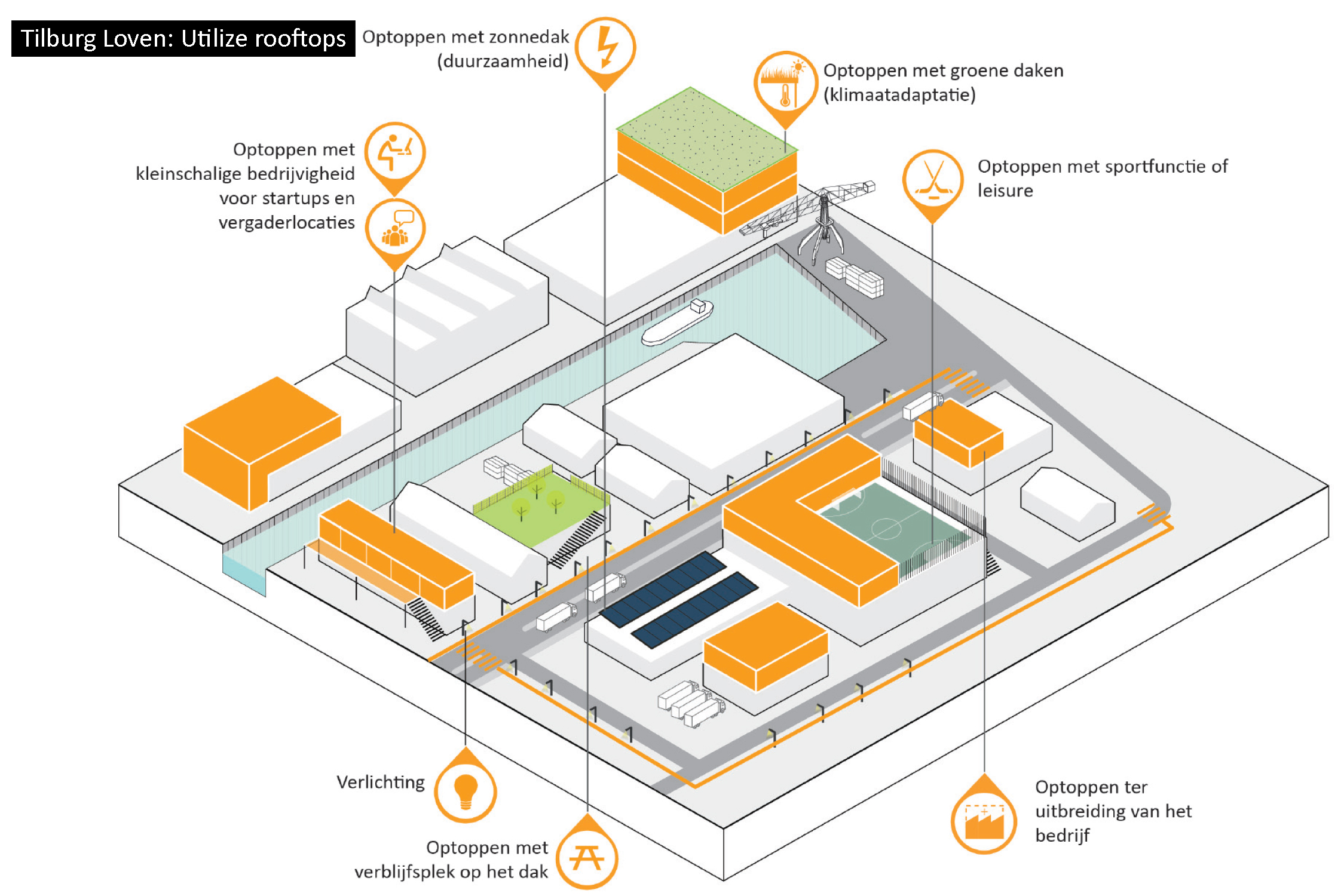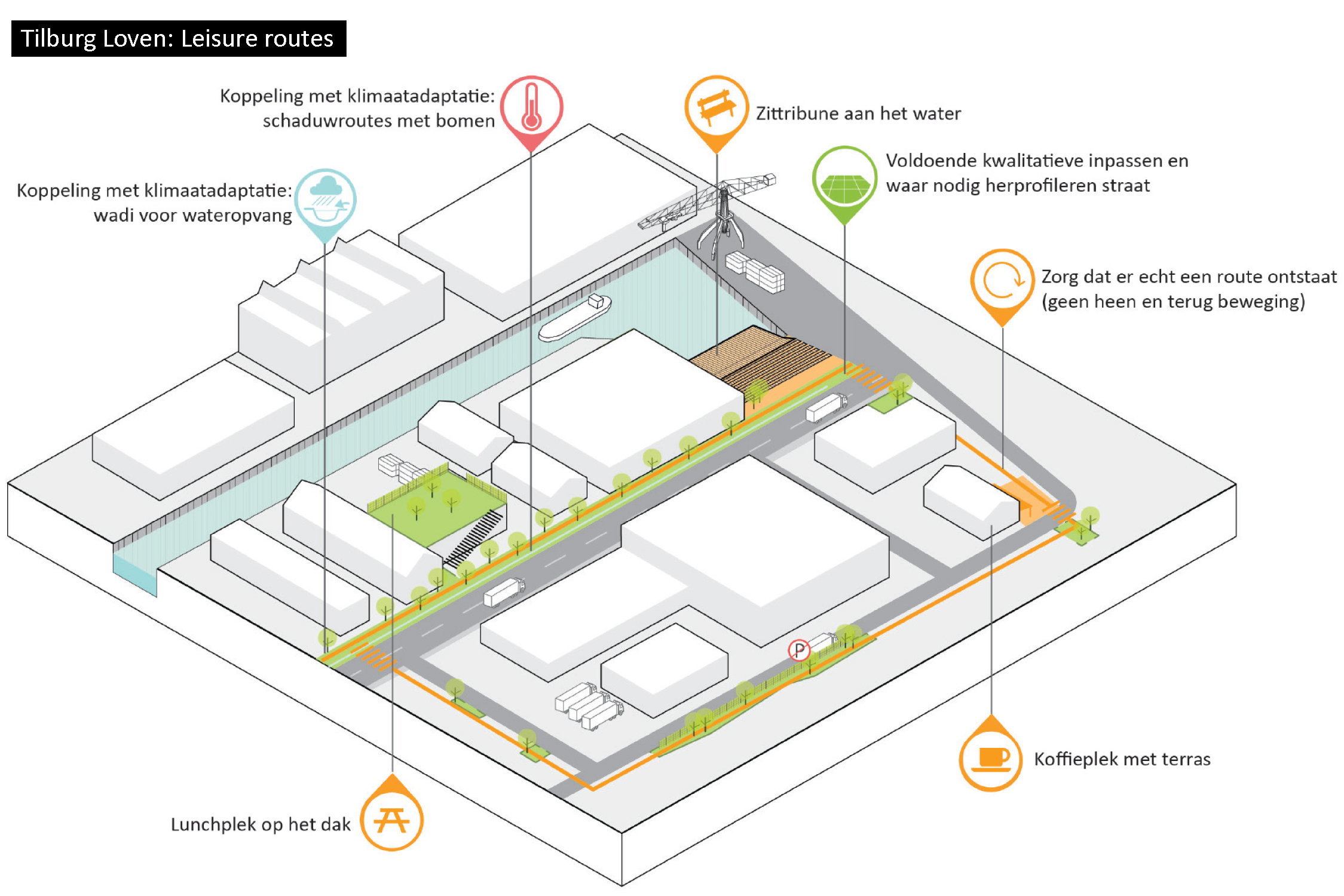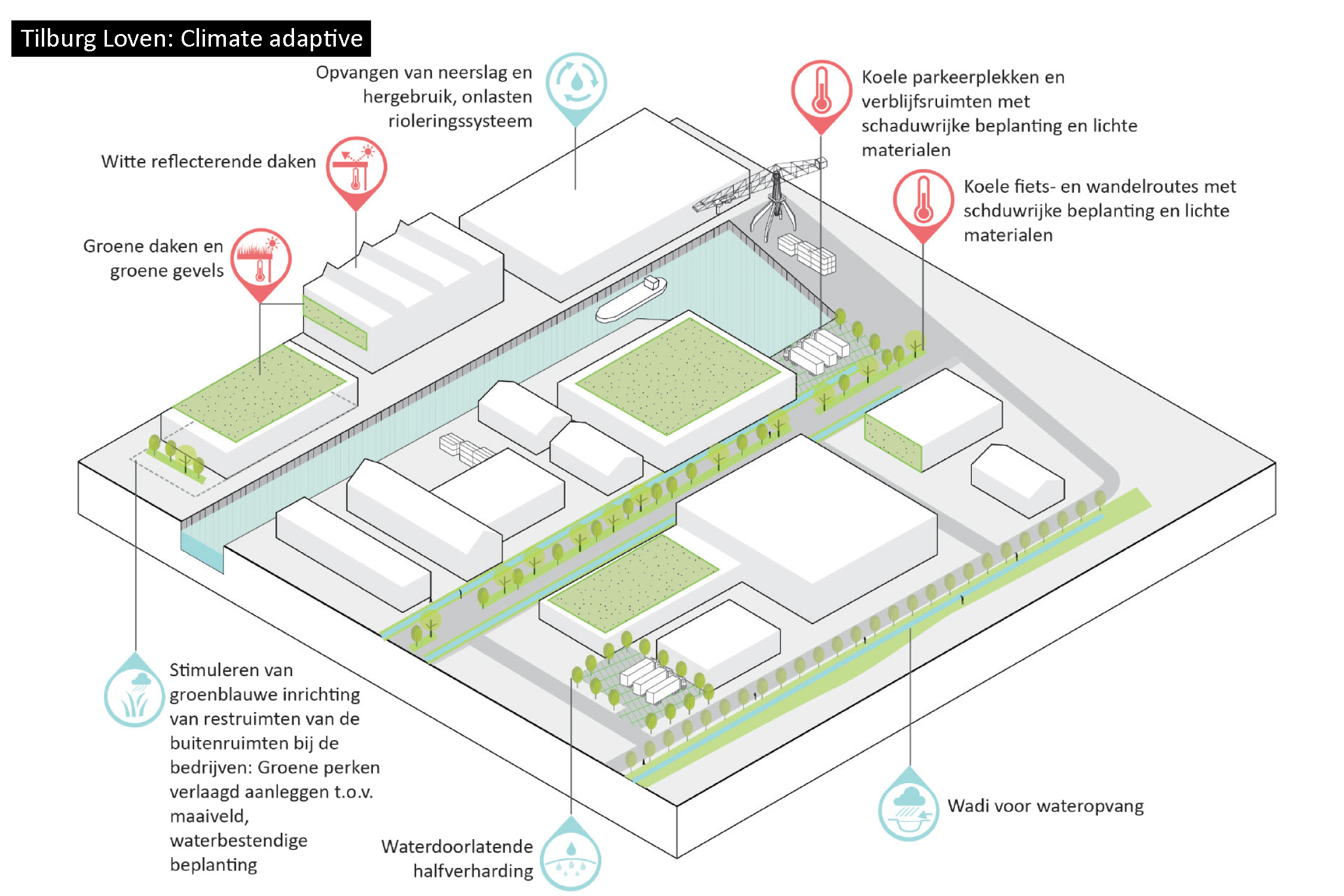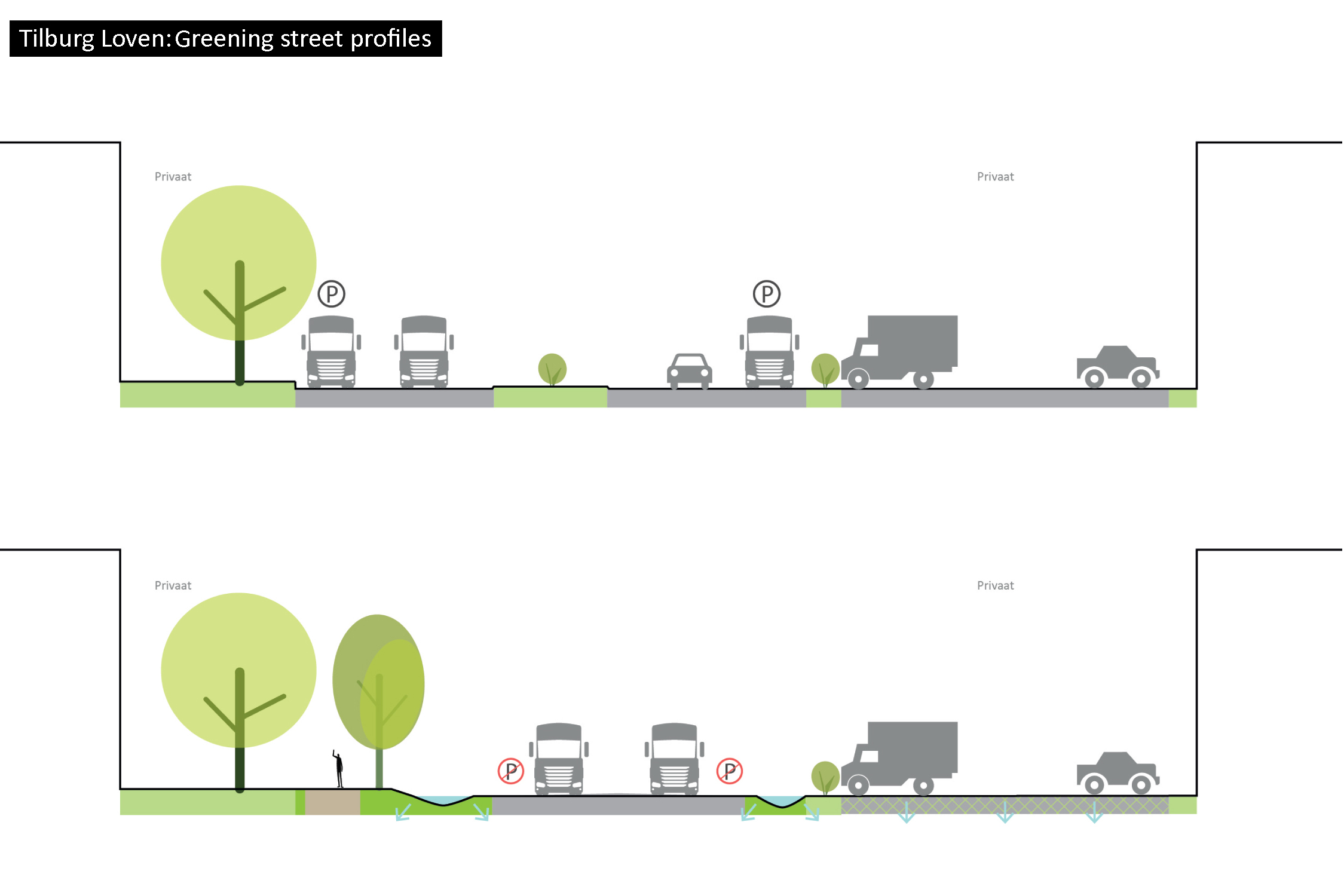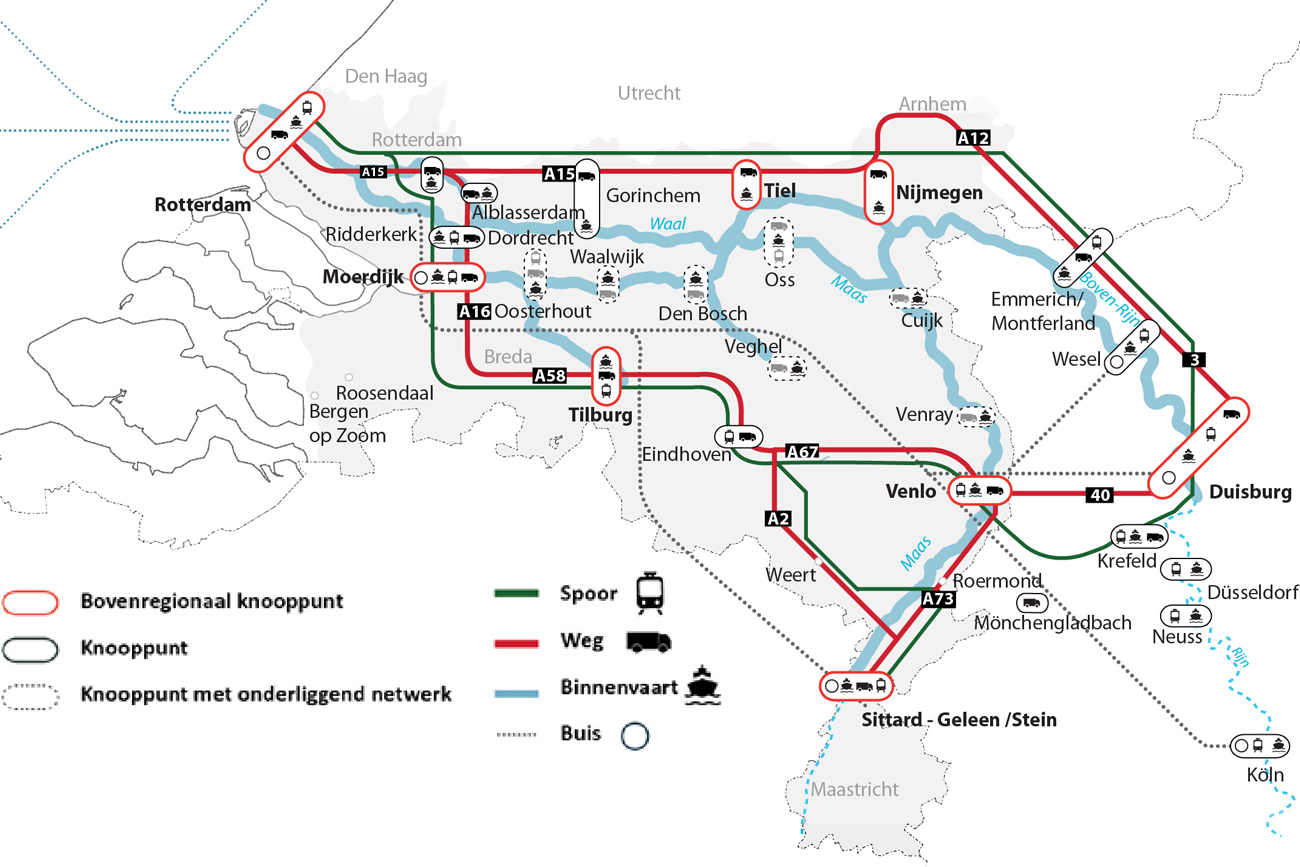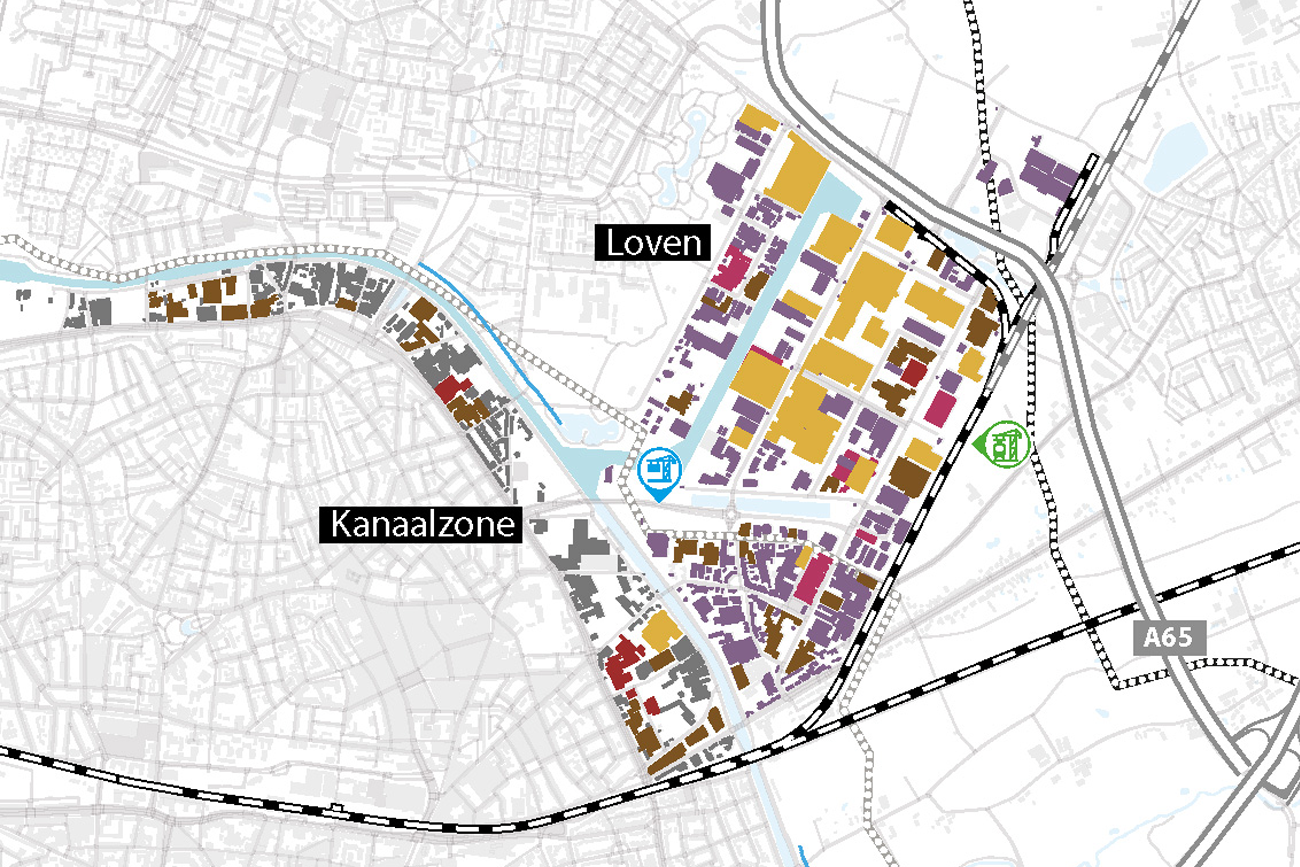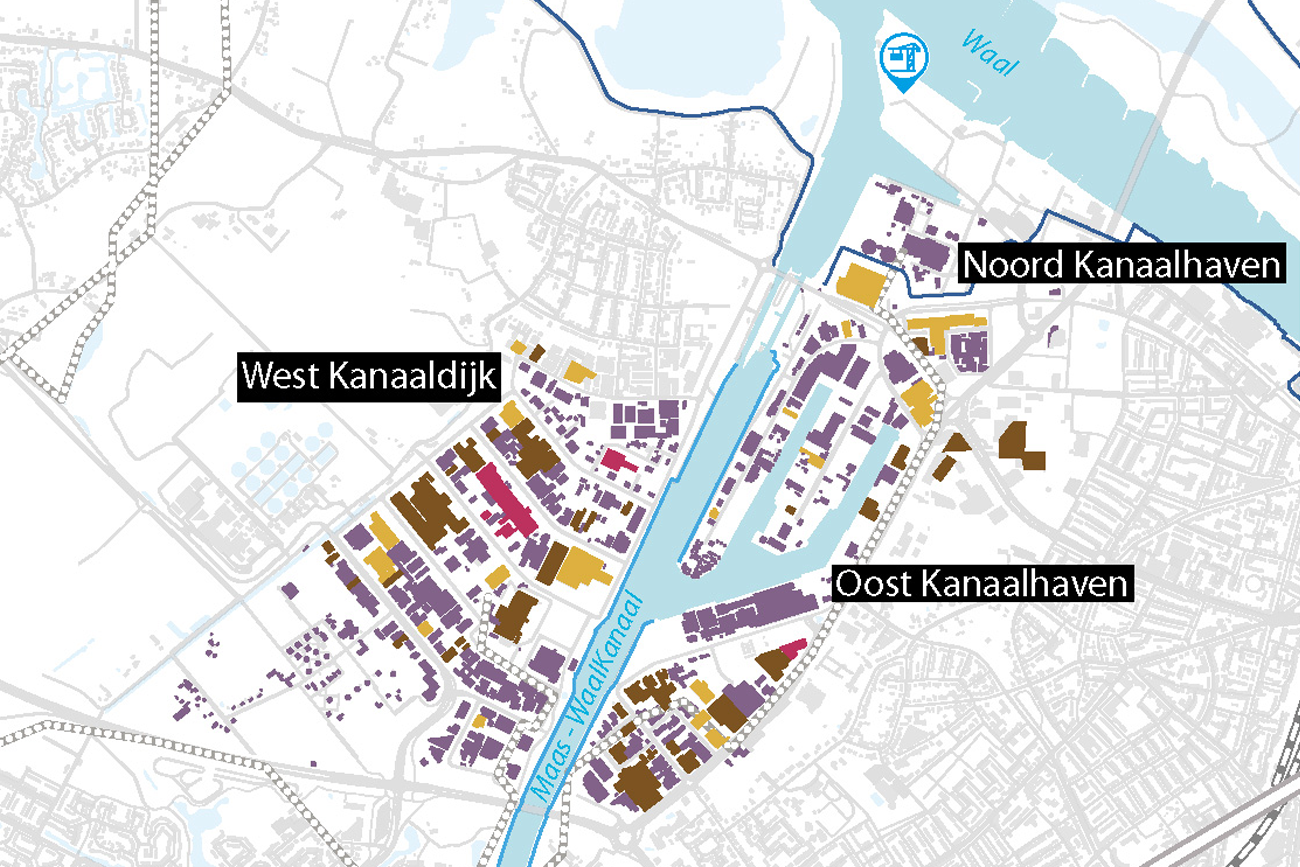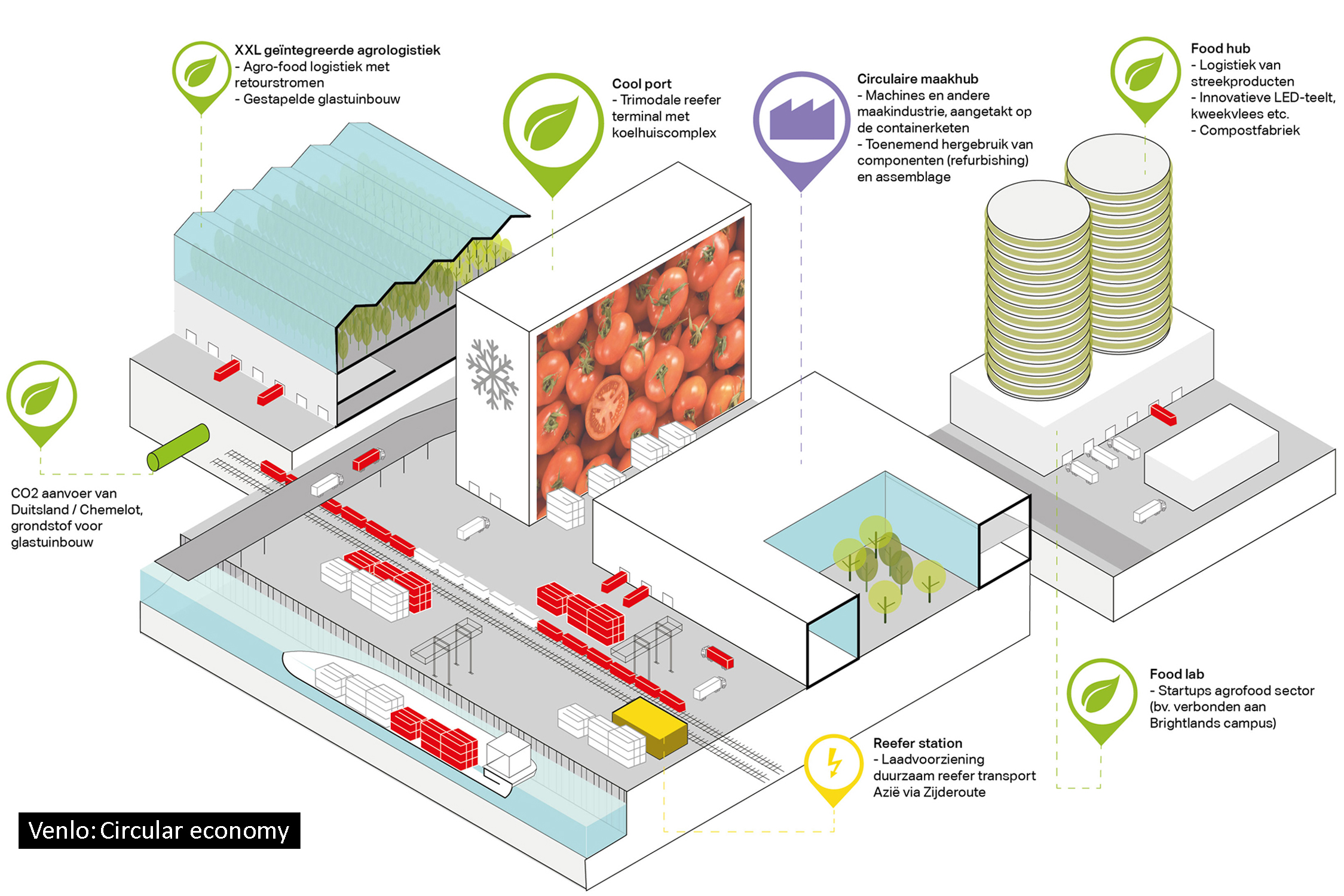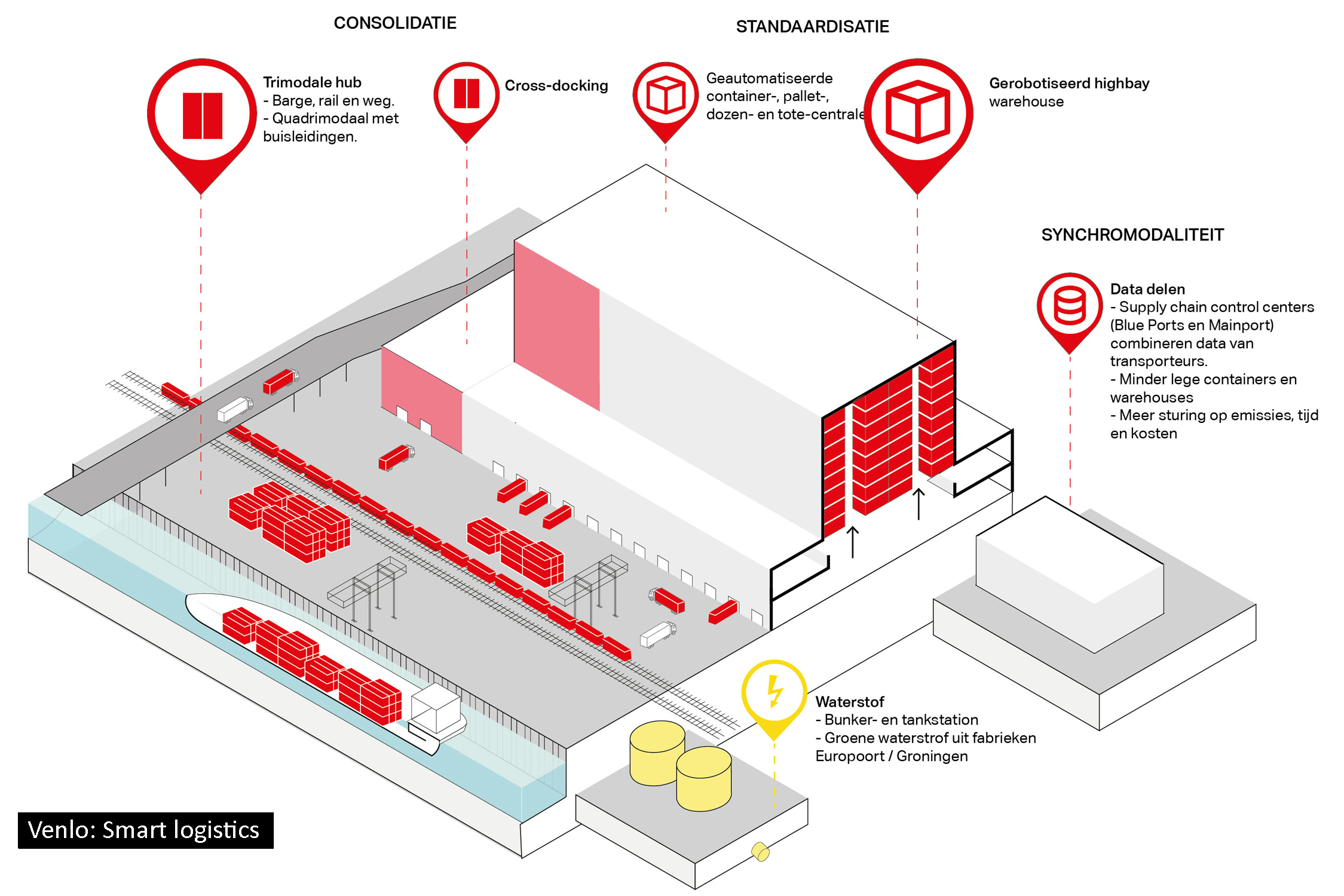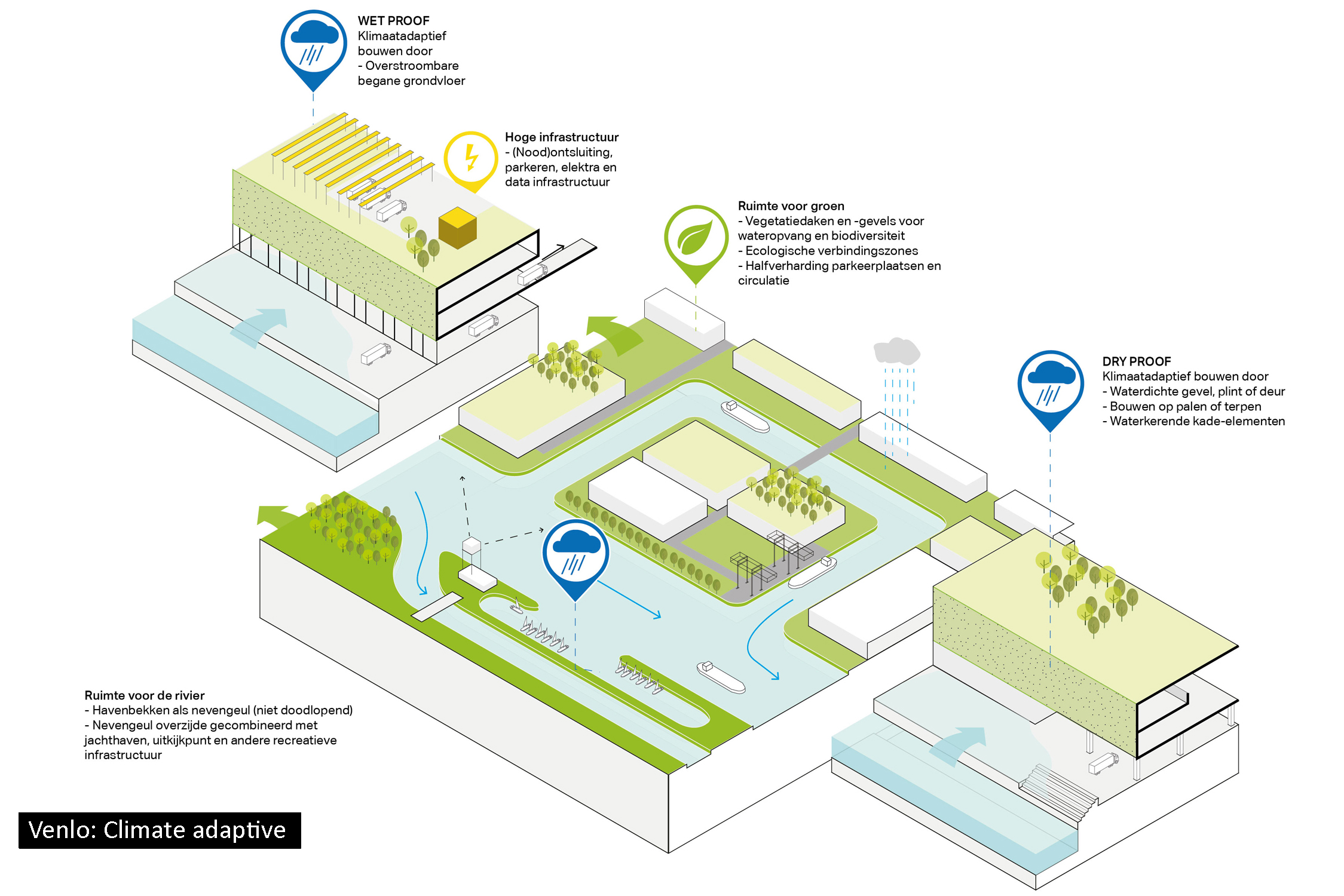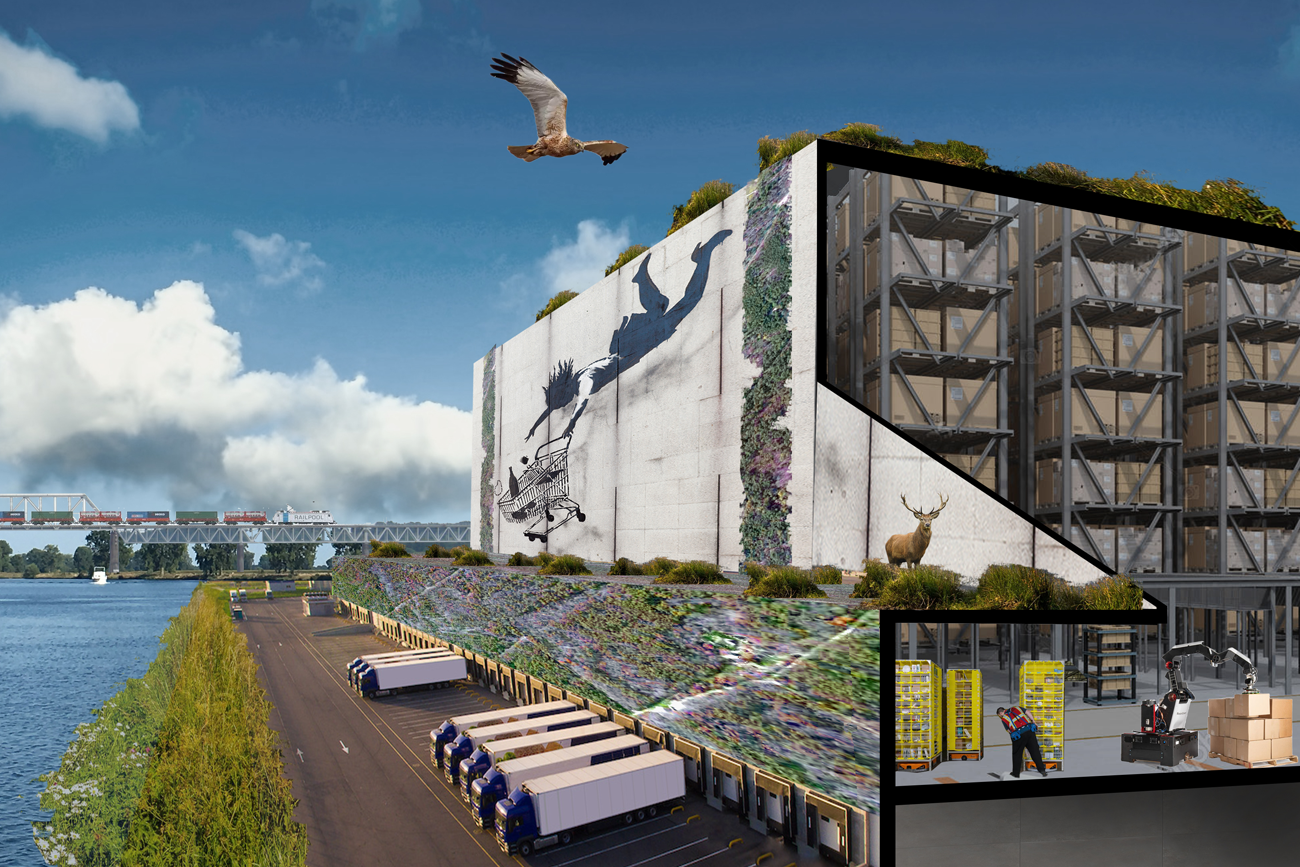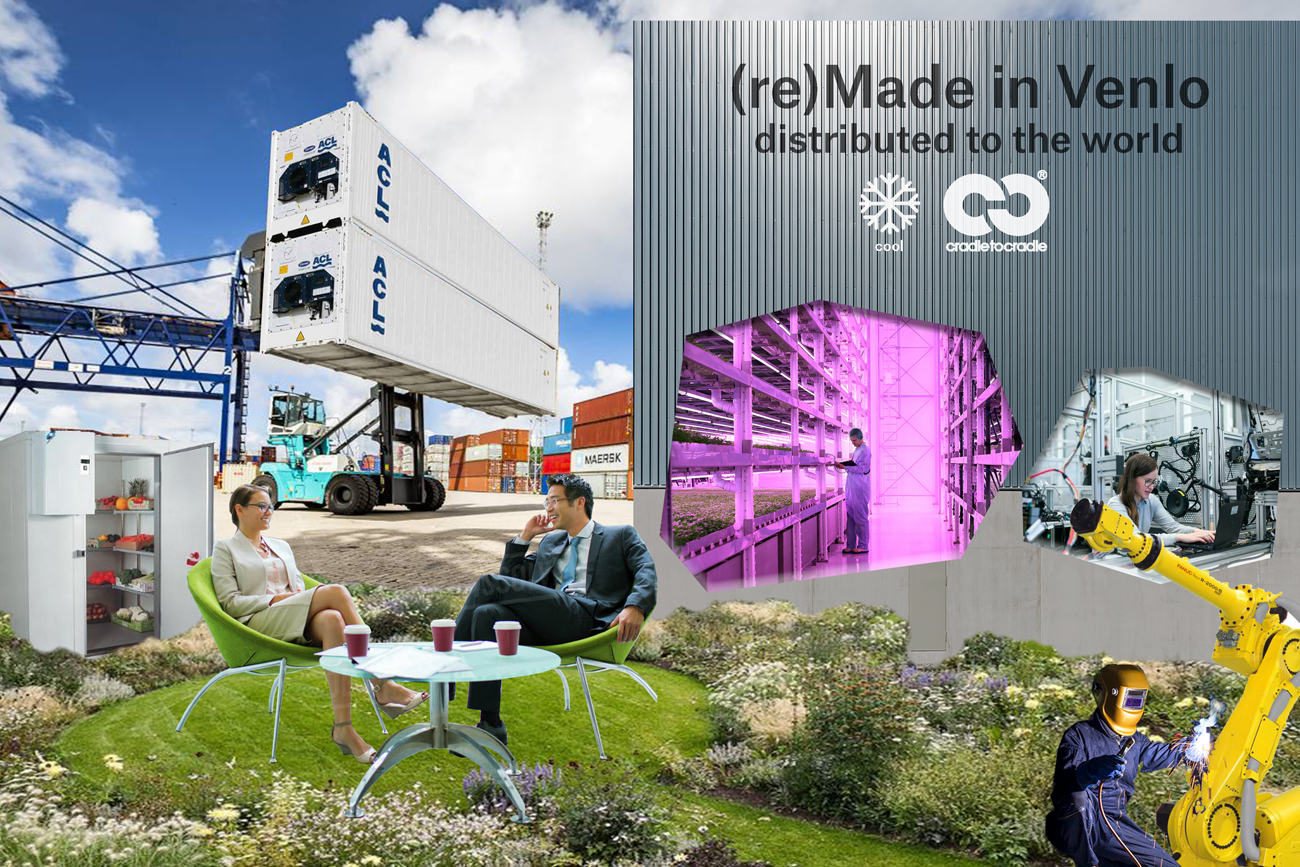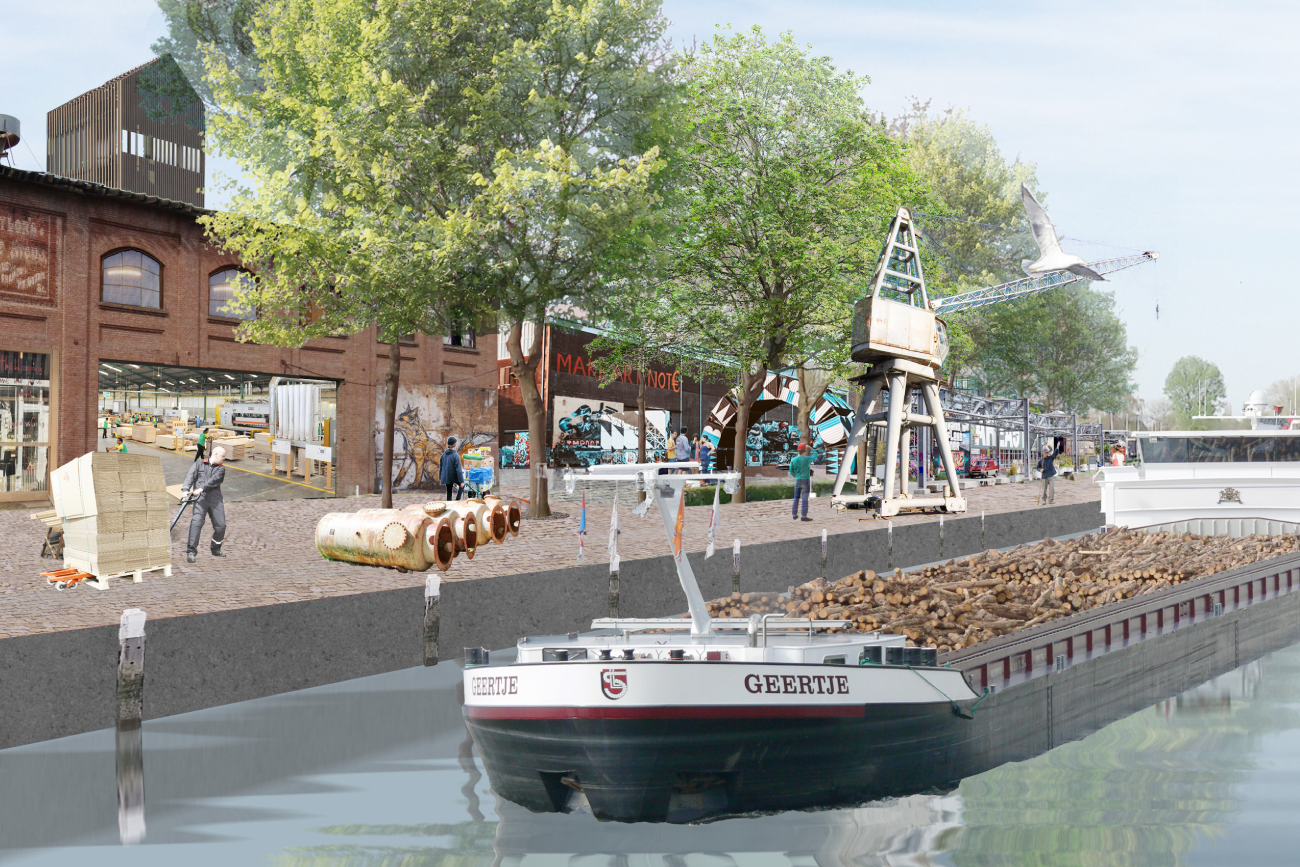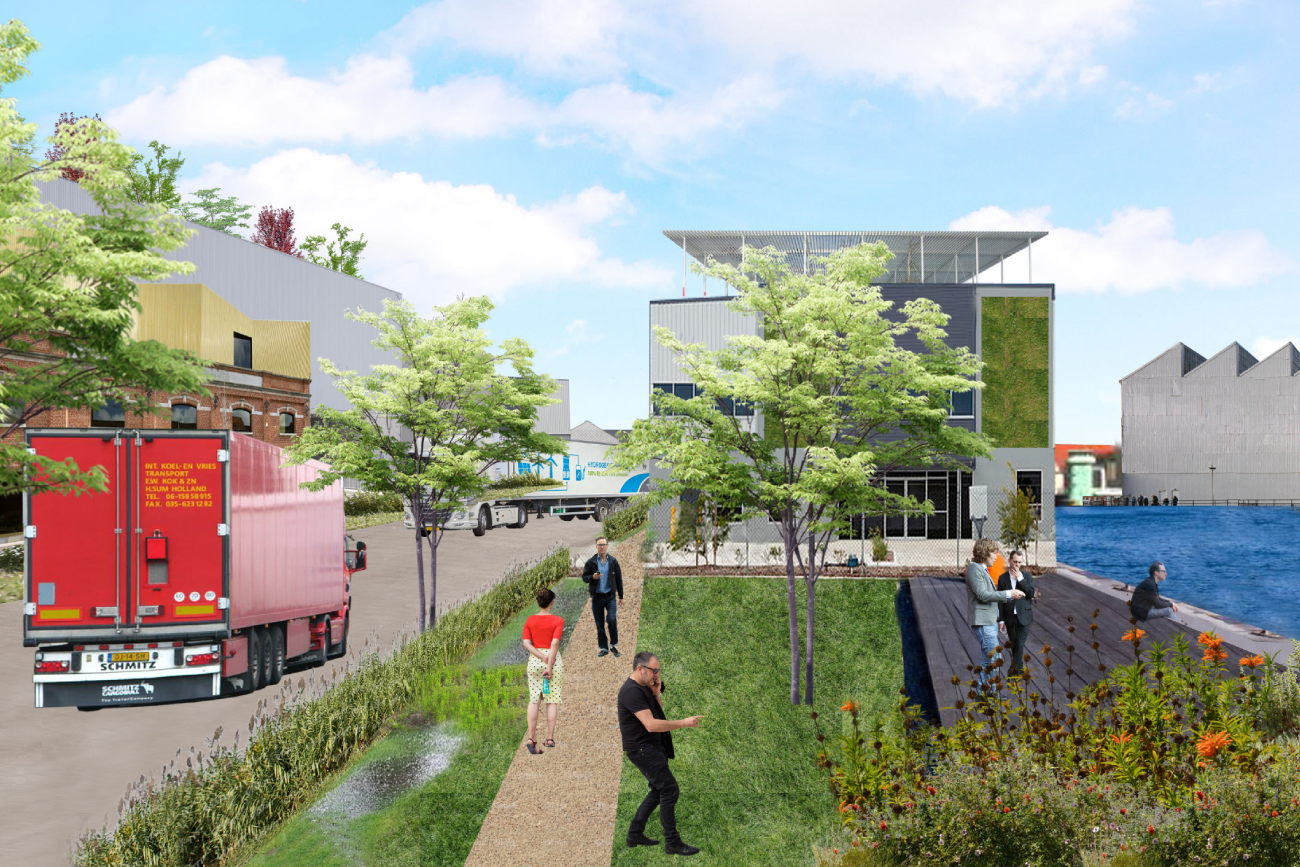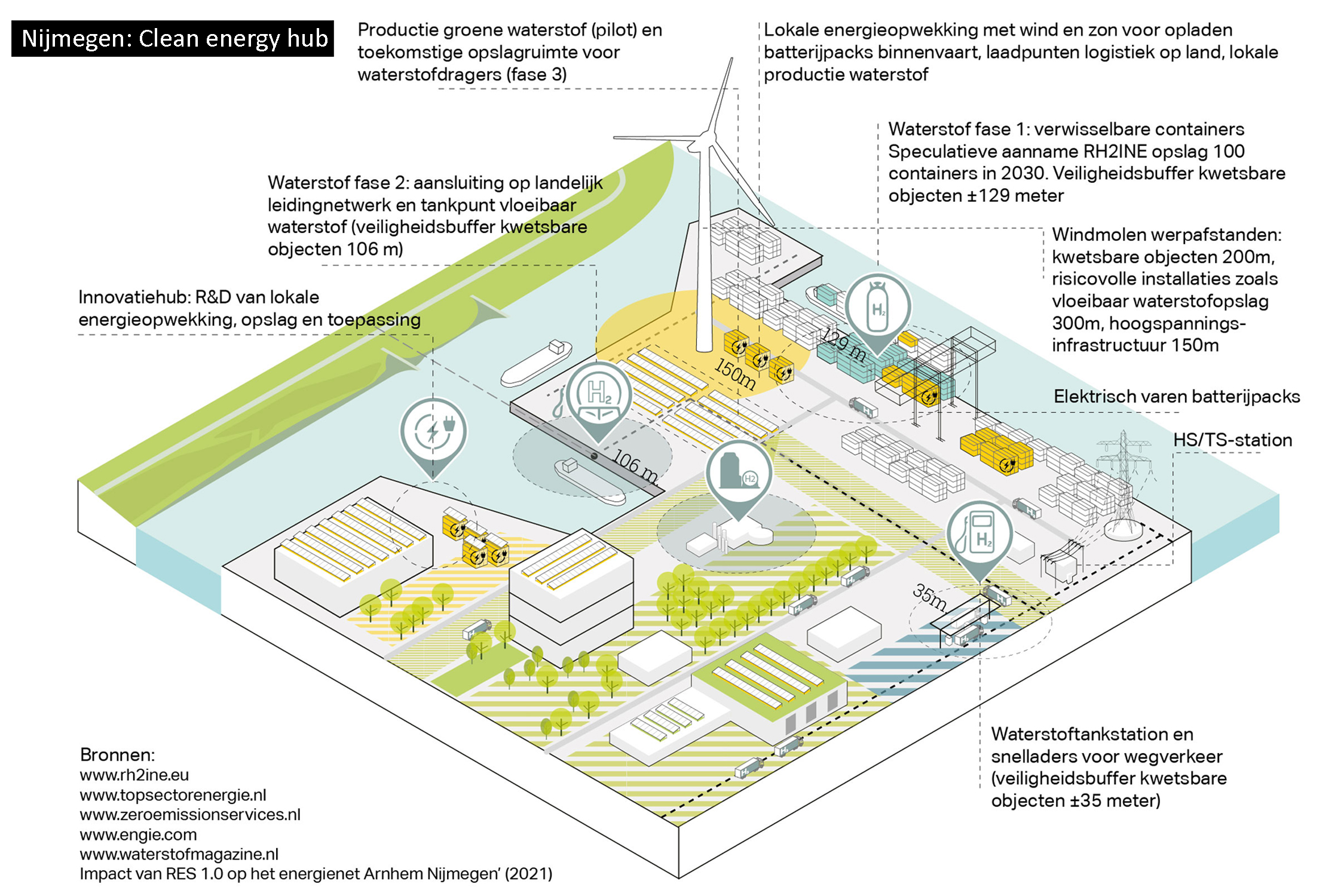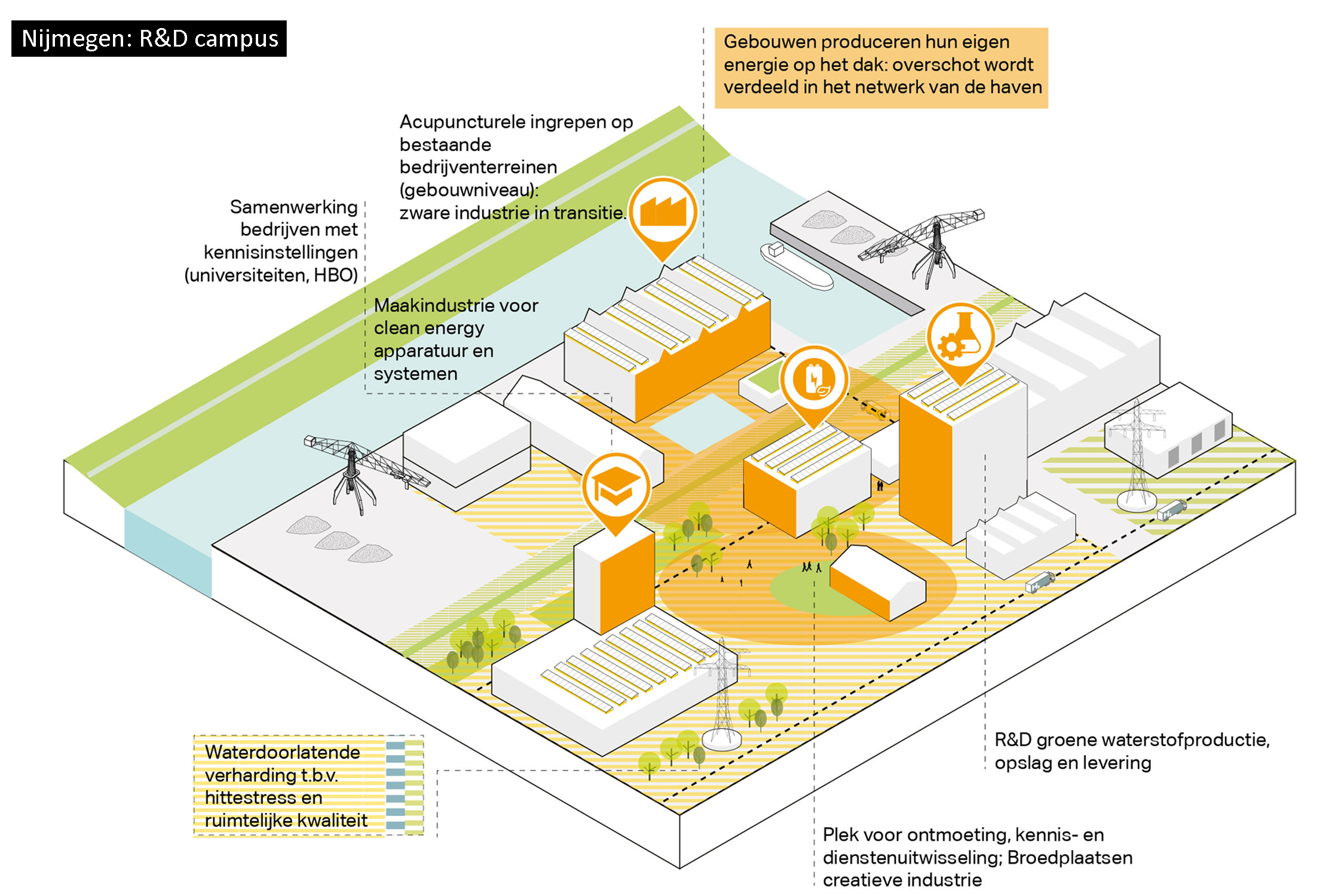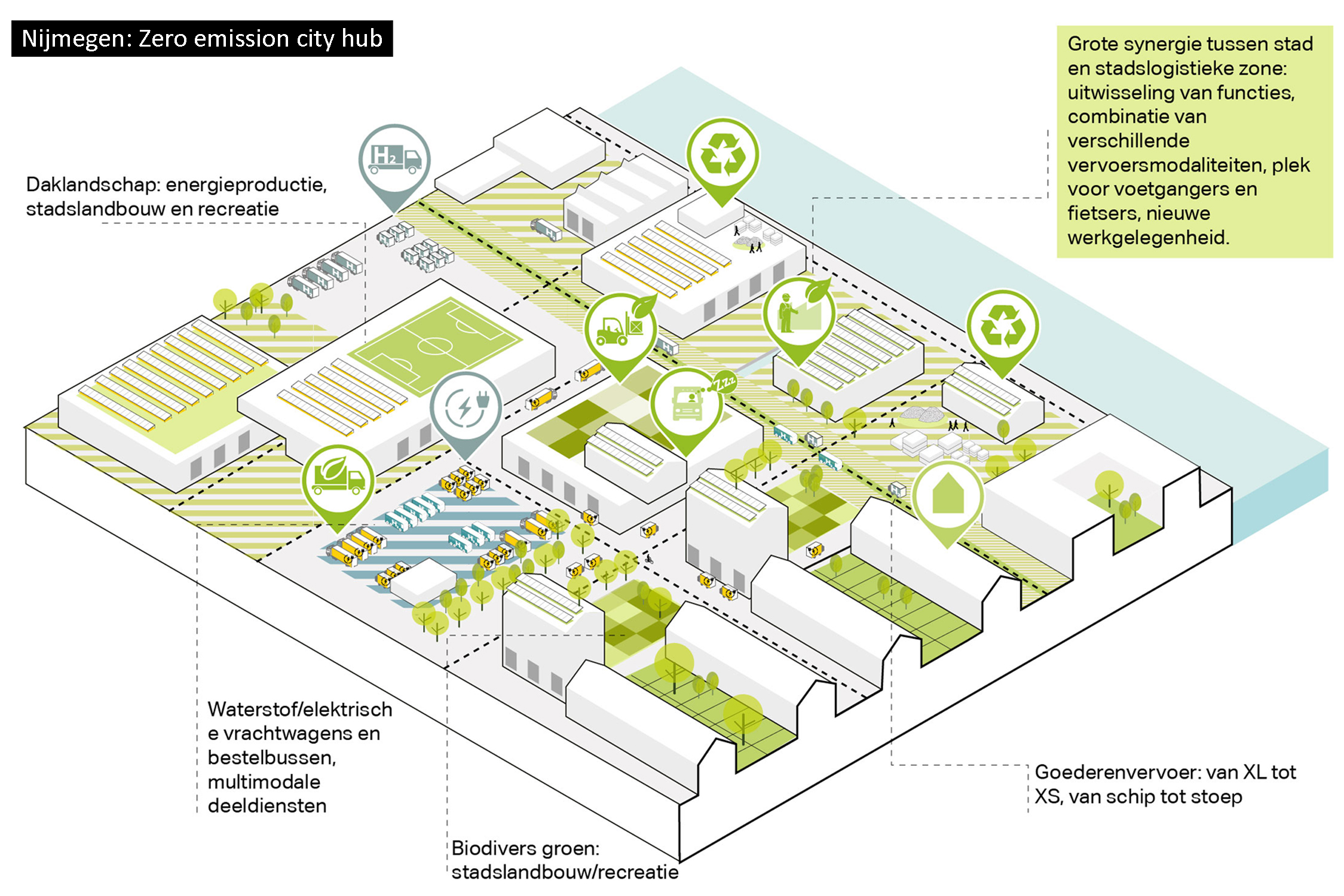– Tilburg, Nijmegen and Venlo along the Freight Corridor
Sustainable Logistics
Developing tools for logistic nodes by looking at Tilburg, Nijmegen and Venlo along the Freight Corridor
In the Netherlands rapidly growing distribution sector and e-commerce ‘boxes’ are a very prominent aspect of the new trade landscape. This led to a public debate about the desirability and conditions for these new economic developments. The distribution centers compete for scarce space with other land use ambitions and claims such as housing and nature development. Yet the distribution landscape is hardly approached in an integrated or spatial manner. Not only does this affect the spatial quality, also opportunities for links with contemporary developments (such as circularity and energy transition) remain untapped. Moreover, the industrial terrains filled up rapidly leading to an overflow of logistics to less sustainably accessible locations (sprawl) and non-optimal use of expensive infrastructure. In this study we explored more integral development principles for distribution landscapes that include brownfield development, accessibility of work locations by public transport or bicycle, and enable circular economy, energy transition, climate adaptation and nature development.
By exploring spatial dilemmas, opportunities, and possible solutions, on the basis of three logistics nodes in Tilburg, Nijmegen and Venlo, we develop insights for a Sustainable Landscape of Logistics. The result is a series of tools that can be used to promote sustainable distribution, energy supply and use of space in the nodes. For each location, we explored a theme that represents the challenges of this area, while offering tools that can be applied to other locations along the Netherlands freight corridor. In Tilburg we focus on sustainability, densification and creating more mixed urban trade landscapes, in Venlo on strategic specialization of the node in relation to other nodes on the corridor and in Nijmegen on opportunities for sustainable energy supply networks.
Next to physical interventions we identified governance principles needed to allow for the ambitioned change. We found the development of industrial terrains is approached from a planning-juridical perspective, not a spatial qualitative one. In general, the available public-private design and development instruments fall behind on these applied in urban development. Also, more concrete targets and monitoring is required to meet the abstract but essential sustainability and development goals of the East-Southeast Freight Transport Corridor. These include ambitions for zero-emission logistics, climate-proof development, circular economy, and specialization of nodes. Coordination and sharing of best practices is required in order to step-by-step increase the quality of the trade landscape and the corridor as a whole.
Client: Municipality of Nijmegen, Tilburg and Venlo, TOPcorridors
In collaboration with: Vereniging Deltametropool
Funded by: Stimfund Creatieve Industrie
Logistiek staat in de belangstelling door de snel groeiende e-commerce en de ‘verdozing’ die wordt ervaren in het landschap. Distributiecentra concurreren met MKB, wonen en natuur om de schaarse ruimte. Toch wordt het distributielandschap nog nauwelijks integraal benaderd. Niet alleen doet dit af aan de ruimtelijke kwaliteit, ook koppelkansen voor o.a. circulariteit en energietransitie blijven vaak onbenut. Hierdoor worden kansen gemist bij brownfield ontwikkeling, bereikbaarheid van werklocaties via OV en fiets, en afstemming met andere ontwikkelingen zoals natuur. Bovendien zijn knooppunten grotendeels al ‘vol’. Dit leidt o.a. tot overloop van logistiek naar minder duurzaam ontsloten locaties (sprawl) en niet-optimaal gebruik van dure infrastructuur.
Door ruimtelijke dilemma’s, kansen en oplossingsrichtingen te verkennen, aan de hand van drie logistieke knooppunten in Tilburg, Nijmegen en Venlo, ontwikkelen we inzichten voor een Duurzaam Distributielandschap. Het resultaat is een aantal bouwstenen die kunnen worden ingezet om duurzame distributie, energievoorziening en ruimtegebruik te bevorderen in de knooppunten. De bouwstenen zijn generiek genoeg om toe te passen op andere distributielocaties. Voor elk van de drie locaties hebben we een thema verkend dat past bij de karakteristieken van het terrein, en bouwstenen oplevert die breder inzetbaar zijn binnen de corridor. In Tilburg richten we ons op verduurzaming en functiemenging; in Venlo op strategische specialisatie van het knooppunt binnen de corridor en in Nijmegen op kansen voor duurzame energie. De ontwerpvoorstellen zijn vrije denkoefeningen en gezamenlijke verkenningen van mogelijke kansen voor de bedrijventerreinen.
We zien dat de ontwikkeling van de bedrijventerreinen nog veelal planologisch-juridisch wordt benaderd. Inzet op integrale ontwikkelingen, kwaliteitsverbetering en langetermijnstrategieën kan sterker via stedenbouwkundig ontwerp. Ondanks de lokale verschillen laat dit onderzoek ook duidelijk de overeenkomsten zien tussen de locaties. Veel van de bouwstenen zijn op alle drie de knooppunten van toepassing.
In de gesprekken en in sommige bestaande visies zien we voor bedrijventerreinen dezelfde kwaliteits- en duurzaamheidsambities als voor de woonomgeving, terwijl het publiek-private ontwerp- en ontwikkelinstrumentarium voor eerstgenoemde nog veel minder ontwikkeld is.
Huidige ontwikkelingen en concrete plannen bij de gemeenten staan nog nauwelijks in verhouding tot de hoge, maar ook abstracte, duurzaamheidsdoelen, zoals zero-emissie logistiek, klimaatproof, en circulaire economie.
Er liggen kansen voor een sterkere verbinding tussen bedrijventerreinontwikkeling en corridorontwikkelingen. Ambities van de Goederenvervoercorridor Oost-Zuidoost, zoals meer specialisatie van knooppunten en het verduurzamen van de logistieke sector, kunnen op de bedrijventerreinen vorm krijgen. Dit vraagt wel coördinatie. Ook het delen van best practices van duurzaam inrichten en ontwikkelen met meervoudig ruimtegebruik kan hieraan bijdragen. Het kwaliteitsniveau kan zo stapsgewijs en corridorbreed worden verhoogd.
Opdrachtgever: Gemeente Nijmegen, Tilburg en Venlo, TOPcorridors
Samen met: Vereniging Deltametropool
Financiering: Stimuleringsfonds Creatieve Industrie
Photo header: https://beeldbank.rws.nl, Rijkswaterstaat
